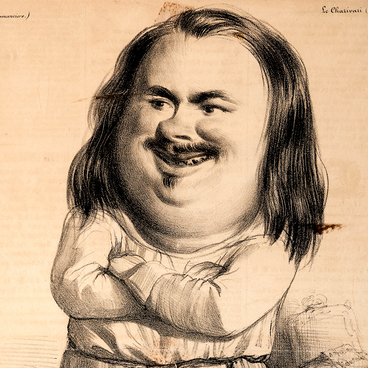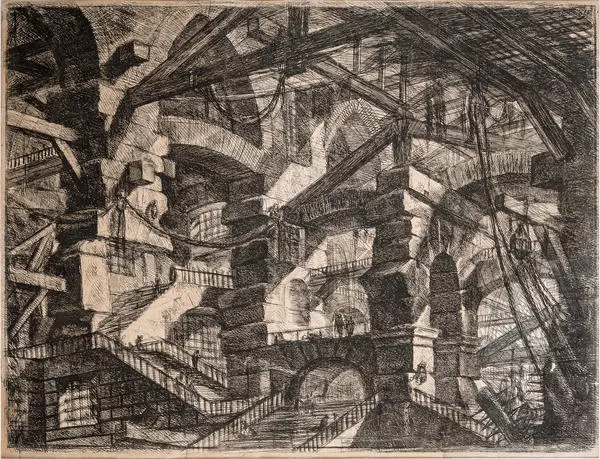Two original aquafOrti of an Italian architect and artist GiovAnni BattIsta PiranEsi were displayed in Sergei Eisenstein’s study: “Prison, ” from the early “Various architecture objects” series, and page 14 from the “Imaginary prisons” series.
According to the director, he obtained both of these aquaforti via exchange with a peripheral museum. Both of these aquaforti were explored in “Piranesi, or the Fluidity of the Form” chapter of the “Pathos” study (1946–1947) published in the “Compassionate nature” book. These prints helped Eisenstein to solve the mystery of the structure of the pathetical works of art that could evoke strong feelings — heroic or tragic ones.
The director has quoted “The History of Art” by Alexander Benua where the author described Piranesi: “Throughout history, there were few artists who could express their art with such force, such flaming passion… Their amazing ability to combine in themselves a scholar and a poet (nobody could tell where Piranesi the Archaeologist ends and Piranesi the Artist begins, where does the poet become a scholar, and where a fiction writer becomes a scrupulous researcher)…”
Eisenstein wrote the following about this page from his collection: “I”ve always admired the fierce nature of Piranesi”s Prisons. But in these matters I”m an enthusiast, not a scholar. And what strikes me initially about his perfection is the… prominence of his balanced humility. This is, perhaps, because I recall so vividly the later “Prisons”, but this appears harmless, almost devoid of pathos. Unecastic…’ Eisenstein wanted to confirm his impression and translated a description of this print from a book of the german art critic Albert Giesecke: ’…soft silver light, just like the Venetians like it; it flows from above into this airy room and dissipates in the shadows stretching far beyond. The forms are quite soft, and aren’t at all defined… the picture itself is dissipating into a myriad of flowing lines…’ Sergei Eisenstein then conducted an experiment: he reimagined the image of the prison in a “flaming” fashion, and he found this exact composition hanging right next to the one he was researching: it was the print from the “Imaginary Prisons” series.
According to the director, he obtained both of these aquaforti via exchange with a peripheral museum. Both of these aquaforti were explored in “Piranesi, or the Fluidity of the Form” chapter of the “Pathos” study (1946–1947) published in the “Compassionate nature” book. These prints helped Eisenstein to solve the mystery of the structure of the pathetical works of art that could evoke strong feelings — heroic or tragic ones.
The director has quoted “The History of Art” by Alexander Benua where the author described Piranesi: “Throughout history, there were few artists who could express their art with such force, such flaming passion… Their amazing ability to combine in themselves a scholar and a poet (nobody could tell where Piranesi the Archaeologist ends and Piranesi the Artist begins, where does the poet become a scholar, and where a fiction writer becomes a scrupulous researcher)…”
Eisenstein wrote the following about this page from his collection: “I”ve always admired the fierce nature of Piranesi”s Prisons. But in these matters I”m an enthusiast, not a scholar. And what strikes me initially about his perfection is the… prominence of his balanced humility. This is, perhaps, because I recall so vividly the later “Prisons”, but this appears harmless, almost devoid of pathos. Unecastic…’ Eisenstein wanted to confirm his impression and translated a description of this print from a book of the german art critic Albert Giesecke: ’…soft silver light, just like the Venetians like it; it flows from above into this airy room and dissipates in the shadows stretching far beyond. The forms are quite soft, and aren’t at all defined… the picture itself is dissipating into a myriad of flowing lines…’ Sergei Eisenstein then conducted an experiment: he reimagined the image of the prison in a “flaming” fashion, and he found this exact composition hanging right next to the one he was researching: it was the print from the “Imaginary Prisons” series.





